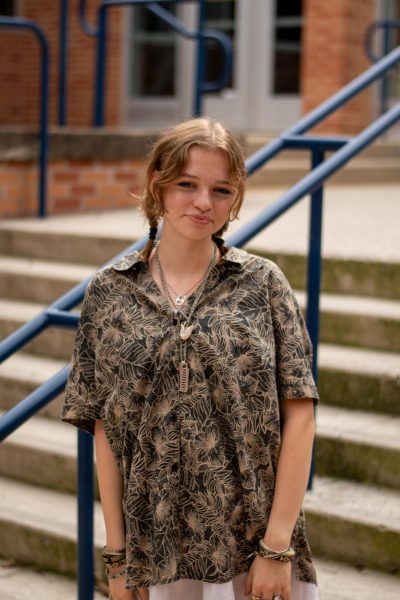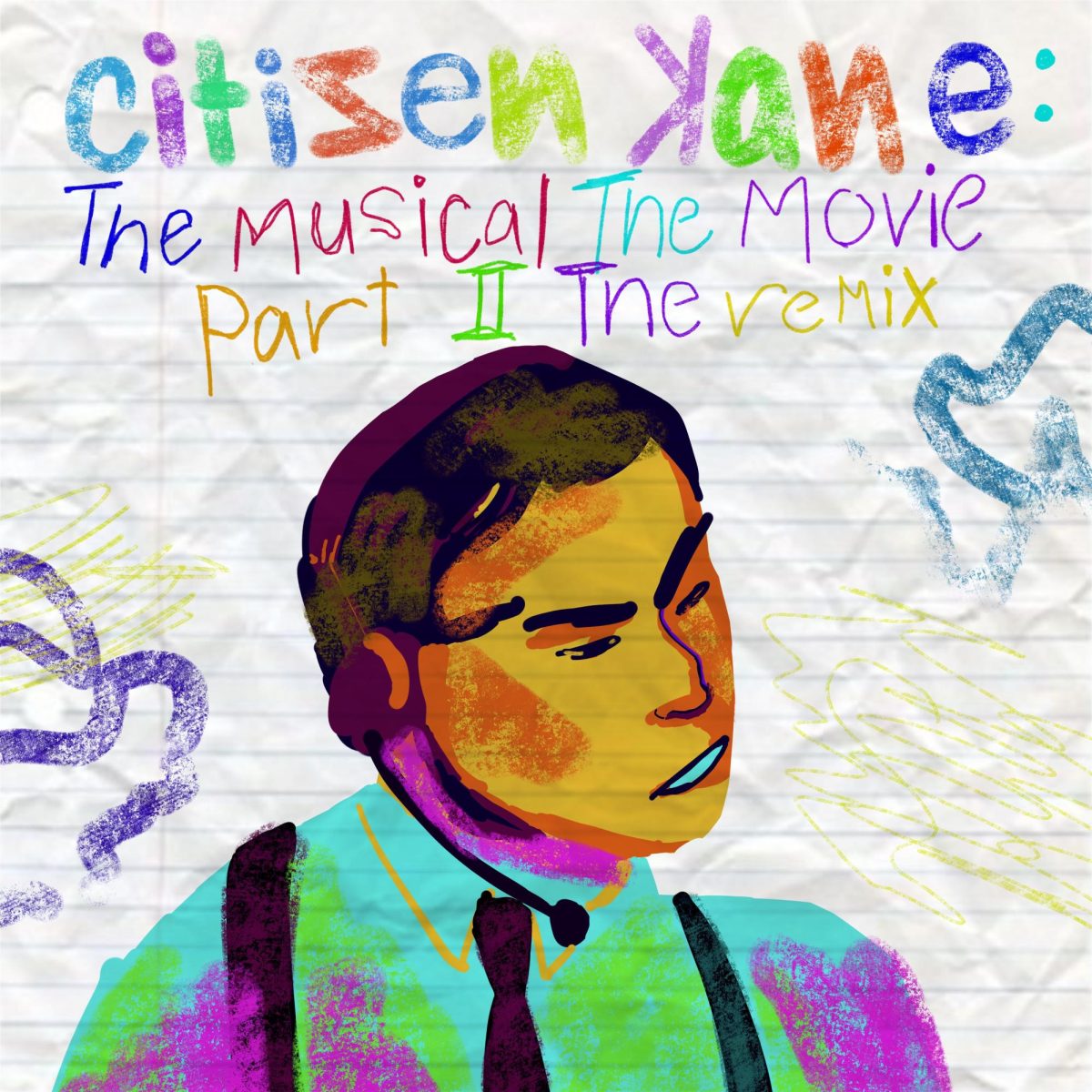 We live on a planet that is overflowing with unnecessary clothing. In order for designer fashion to justify its continued strain on the planet, it must be producing artful, interesting designs that bring new ideas and sustainable methods.
We live on a planet that is overflowing with unnecessary clothing. In order for designer fashion to justify its continued strain on the planet, it must be producing artful, interesting designs that bring new ideas and sustainable methods.
This past September, fashion month, was full of many disappointingly boring collections, but despite this, many brands this season brought interesting new takes on designer fashion, using it as the art form it truly should be.
The official spring-summer 2025 fashion season ran from Sept. 6 to Oct. 1, beginning in New York City, then London, Milan and Paris. While many of the fashion collections this season were underwhelming, some brands showed truly great and innovative ideas. Here are my top five.
Steve O. Smith is a London-based designer that bases his practice on his drawings. He transforms his abstract black artwork into gorgeously restrained pieces with deep black appliqués over white fabric and sheer organza.
According to Vogue, Smith’s inspiration comes from the art of George Grosz, with his distinct lines and fast moving scenes. Inspiration was also drawn from the 1929 silent movie “Pandora’s Box” by G.W. Pabst, specifically, the star Louise Brook and her expressive and vulnerable movements.
Movement was a strong theme in the collection. One dress looked as if it was twirling, frozen in time, with the skirt twisted around the wearer’s legs. Another dress looked like it had captured a gust of wind in its skirt. The line drawings also gave the impression of chaotic movement, similar to the kind in Grosz’s artwork.
Smith was clearly drawing from the 1920s, ’30s, and ’40s, but the garments still managed to feel like products of our current era, a testament to his skill for curating and implementing his drawings into garment form.
Hodakova is the Stockholm-based brand created by Ellen Hodakova Larsson. The brand has built up a great reputation among fashion enthusiasts for its bold and provocative designs using unconventional materials.
This collection, titled “Collective Memories,” continued the brand’s ethos, featuring dresses made entirely of vintage belts, shirt collars, sculpted zippers and buttons sewn together to create the illusion of lace.
Not only is Hodakova’s practice of repurposing old materials sustainable and innovative, it also creates highly compelling and beautiful designs. This wasn’t a gimmick. However wacky and juvenile her ideas may have sounded, Hodakova’s final products were beautifully executed.
In this collection, Hodakova sought to blend tradition with modernity. She mixed traditional elements of 20th century clothing, like argyle sweaters, plastic buttons and men’s trousers, but accentuated them to an almost satirical level.
The opening look of the collection featured a dress inspired by formal men’s trousers, but the waistband was expanded and raised to the shoulders, becoming a dress with huge shoulders and a narrow skirt. Another look was made entirely of waistbands stacked on top of each other high enough that they covered the model’s face almost entirely.
Hodakova’s ability to execute these imaginative and avant garde ideas in a way that is both elegant and fun was astute. Through her designs and creative sustainability, Hodakova offered a thoughtful idea of how to utilize fashion’s past to craft fashion’s future.
Paolo Carzana is the Welsh designer for his eponymous London based brand, Paolo Carzana. The brand works mainly with natural and recycled materials and natural dyes. Raw edges, wrinkled fabrics and natural colors are a signature for the brand. Carzana’s designs look like they’re out of a post-apocalyptic world, one where humans have reverted back to the fabrics of the past, but with the designs of the future.
“This is reflective of the hell that we are living in,” Carzana said to Vogue, “of caring about what you look like, and not caring about the world around you.”
Making fashion in an era of climate change and overconsumption is a daunting task. Designers have to reckon with how to create fashion without acknowledging the overall pointlessness of it all. Instead of shying away from it, however, Carzana addressed this by creating sustainable, beautiful clothing that speaks to these issues.
According to the show notes for the collection, Carzana’s main inspiration was Narcissus, the man that fell in love with his own reflection in Greek mythology. The opening look of the collection represented Narcissus, but, instead of his traditional representation, Carzana used the reflection as a point of self-reflection, rather than a point of obsession.
“Narcissus does not fall in love with his reflection or himself: he reverses, washes away his reflection and turns away,” Carzana told Vogue. “If we ourselves can understand our own contributions to the world wide problems we face, global warming, the destruction of culture, social outcry, we can look in our reflection and be honest with our participation. Maybe then, we can understand and move forward.”
Massachusetts-born Zoe Gustavia Anna Whalen is an upcoming designer that creates handcrafted designs inspired by Victorian undergarments and poetic spirituality. Her most recent collection featured beautifully sculptural dresses, mostly in white, black and beige color palettes. Many of the dresses took on organic forms, almost as if they grew from nature rather than being crafted by human hands. They also clearly reference highly structured clothing like corsets and panniers.
The materials used were a huge strength in this collection. Lace, paper mache, aged denim, ribbed tank tops and vintage napkins formed the ethereal pieces. The pieces had an undeniable poeticism and femininity, paying homage to women in history. She turned symbols of traditional womanhood into freeing, radical fashion.
Many of Whalen’s garments accentuated features to an unnatural degree, like in her pannier dresses, which gave the wearer extremely wide and high hips, or in her stuffed tank top that created an illusion of a bloated, folding stomach. However, these details didn’t look grotesque or unattractive, they instead showed how beautiful these unconventionally attractive features can be. Whalen is truly a designer for the future of fashion.
Born in Hong-kong, Robert Wun has been based in London since the founding of his eponymous brand in 2014. His recent couture collection, titled “Homecoming Couture,” celebrates the brand’s 10 year anniversary.
For the show, Wun returned to his home region of Hong Kong, presenting his collection at the Hong Kong Palace Museum. The collection pulled from Wun’s childhood memories and culture, paying homage to the women that raised him and his home country.
The collection featured breathtakingly beautiful couture pieces, exemplary of the high quality, avant-garde style that we have come to expect from Robert Wun.
A common motif in the collection was the use of artificial hands and arms, making the models look like they have two sets of arms, reminiscent of Hindu deities such as Brahma, Vishnu and Shiva, whose arms symbolize their power.
The hands were often holding things such as black flowers, bouquets and even a baby. It was often difficult to discern which hands were the model’s and which were the fake ones. According to Wun, the looks were inspired by the women who raised him, their sacrifices, their love and their nurturing.
One of the strongest looks in the collection was a purple gown made of pleated, draped purple fabric. A trail of fabric, pulled from the model’s waist, was draped over her head and folded over to reveal a set of purple arms holding a fake purple baby. The look, titled “Grandma’s Embrace,” presumably represents Wun’s grandmother holding him when he was a baby. The dress evoked a nostalgic and emotional feeling, bringing to life the joy of both the “grandma” and the baby.
Roses were also a big motif in this collection, appearing as silk prints and jacquards in many of the gowns.
Wun Shared with his instagram followers that these looks were “Inspired by the iconic scene from ‘The Grandmaster’ by Wong Kar Wai, and drawn from the memories of thrift shopping in the back alley streets of Hong Kong.”
The collection was a clear testament to Wun’s love for women, honoring them through his beautiful gowns, but also through his symbolism of femininity through the flower motif and empowering silhouettes.
More than anything, this collection was simply beautiful. Delicate pleating, scooping drapes, sharp tailoring and expert craftsmanship brought the collection to life. Even without knowing the meaning behind the pieces, Wun’s couture had an emotional pull.
While watching recordings of the show, I often felt emotionally moved by the pieces, even tearing up at some points. Wun has such a strong understanding of the human form and how to evoke feelings. He does this so effectively that his work transcends fashion and becomes a piece of fine art.
Wun’s 10 years as creative director for his brand have been spectacular. The work he has produced is unrivaled in its originality and beauty by any other designer of his stature. Designers like Wun are pushing the boundaries of what fashion can be and how the fashion industry should work.







